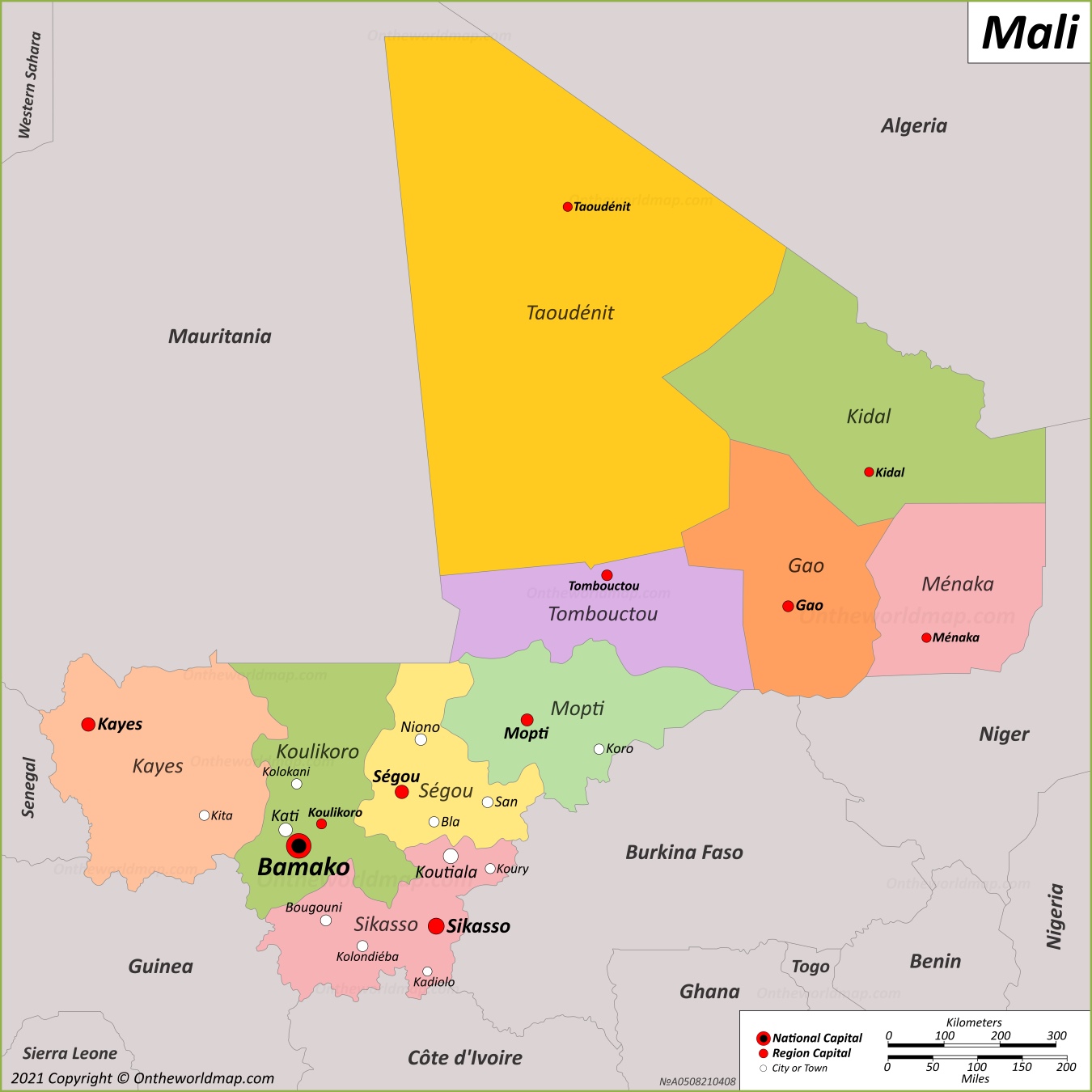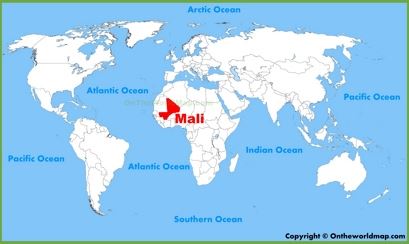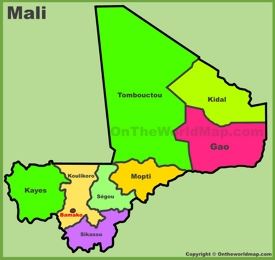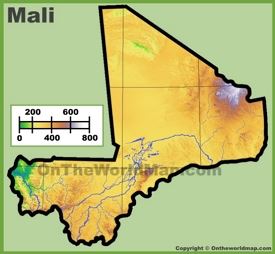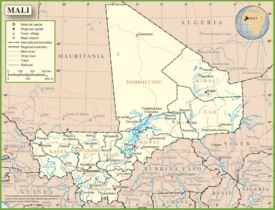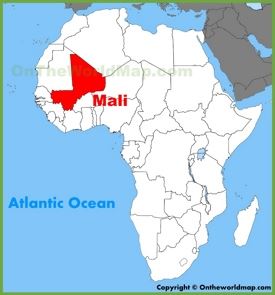Mali Map
Description:
This map shows governmental boundaries of countries, region boundaries, regions, region capital cities, major cities and towns in Mali.
Size: 1350x1350px / 240 Kb
Author: Ontheworldmap.com
You may download, print or use the above map for educational, personal and non-commercial purposes. Attribution is required. For any website, blog, scientific research or e-book, you must place a hyperlink (to this page) with an attribution next to the image used.
Online Map of Mali
Detailed Maps of Mali
About Mali
Mali, a landlocked country in West Africa, covers an area of about 478,841 square miles (1,240,192 square kilometers). It is bordered by Algeria to the north, Niger to the east, Burkina Faso and Cote d'Ivoire to the south, Guinea to the southwest, and Senegal and Mauritania to the west. With a population of about 22 million, Mali is one of the most populous countries in Africa.
Bamako, the capital and largest city, serves as the administrative and economic center. Other significant cities include Timbuktu, known for its historical significance as a center of learning, and Gao, a major commercial center.
Mali's economy is largely based on agriculture, with cotton and livestock being the main exports. Gold mining contributes significantly to the economy, making Mali one of the leading gold producers in Africa.
The country faces challenges such as political instability, security and economic development. Efforts to address these challenges include international cooperation and initiatives aimed at sustainable development. Despite these challenges, Mali remains a country with a rich cultural heritage and potential for economic growth.
The Facts:| Capital: | Bamako |
| Area: | 478,841 sq mi (1,240,192 sq km) |
| Population: | ~ 22,000,000 |
| Official language: | French |
| Currency: | West African CFA franc (XOF) |
| Driving side: | right |
| Calling code: | +223 |
| Internet TLD: | .ml |
| Time zone: | UTC (GMT) |
| Gross domestic product 2023 (PPP): |
|
| Gross domestic product 2023 (nominal): |
|
Largest Cities: Bamako, Sikasso, Koutiala, Ségou, Kayes, Kati, Mopti, Niono, Gao, San, Koro, Bla, Bougouni, Mandé, Kolondiéba, Kolokani, Pelengana, Tombouctou.
Regions of Mali: Kayes, Koulikoro, Bamako, Sikasso, Ségou, Mopti, Tombouctou, Gao, Kidal, Taoudénit, Ménaka, Bougouni, Dioila, Nioro, Koutiala, Kita, Nara, Bandiagara, San, Douentza.
Cercles of Mali: Ansongo, Bourem, Gao, Menaka, Bafoulabé, Diema, Kita, Kéniéba, Kayes, Nioro du Sahel, Yélimané, Abeibara, Kidal, Tessalit, Tin-Essako, Banamba, Dioila, Kangaba, Koulikoro, Kolokani, Kati, Nara, Bandiagara, Bankass, Djenné, Douentza, Koro, Mopti, Tenenkou, Youwarou, Bla, Barouéli, Macina, Niono, Ségou, San, Tominian, Bougouni, Kolondieba, Kadiolo, Koutiala, Sikasso, Yanfolila, Yorosso, Diré, Goundam, Gourma-Rharous, Niafunke, Timbuktu Cercle.
Geography of Mali
Mali, located in West Africa, is characterized by diverse geographical regions: the Sahara desert in the north, the semi-arid Sahel in the central part, and the more fertile Sudanese savannah in the south. The Niger River, the most important source of water, crosses the country, providing agriculture and fishing.
The climate varies between the regions: the north is an arid desert with minimal rainfall, while the central and southern regions have a semi-arid or tropical climate. The rainy season lasts from June to September and affects mainly the southern regions. Temperatures can range from extremely hot in the desert to more moderate in the southern savannahs. These geographic and climatic conditions have a significant impact on agricultural practices and natural resource management in Mali.
Brief History of Mali
Mali's history includes the rise and fall of several influential empires in West Africa. The Ghana Empire, which flourished from the sixth to the thirteenth century, established early trade networks. The Mali Empire, which reached its zenith in the fourteenth century under Mansa Musa, became famous for its wealth, extensive trade routes, and centers of learning such as Timbuktu.
After the decline of the Malian Empire in the 15th century, the Songhai Empire emerged and expanded its influence until it collapsed in the late 16th century due to internal strife and external invasions. In the 19th century, French colonial forces incorporated Mali into French West Africa. Mali gained independence in 1960, experiencing periods of political instability and military rule, but continuing to strive for democratic rule.

